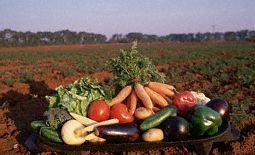 Community Supported Agriculture (CSA) originated in Japan (1960s) and Europe (1970s) and began in the United States in the 1980s. This “movement” provides a direct link between consumers and farmers. The goal of this relationship is to provide solutions to the problems of small farm survival, food quality, nutrition, community building, sustainability, and quality of life. This direct marketing method can benefit both farmer and consumer in many ways.
Community Supported Agriculture (CSA) originated in Japan (1960s) and Europe (1970s) and began in the United States in the 1980s. This “movement” provides a direct link between consumers and farmers. The goal of this relationship is to provide solutions to the problems of small farm survival, food quality, nutrition, community building, sustainability, and quality of life. This direct marketing method can benefit both farmer and consumer in many ways.
CSA arrangements are based on a contractual agreement between a farmer and a consumer. Every CSA arrangement operates differently and in a variety of forms. However, the concept is that the consumer, often described as a “shareholder” or “member”, usually purchases a “share” or “membership” prior to the growing season. This not only provides the farmer with capital to start their business, but also ensures a guaranteed market for their product. Members can rely on fresh, local produce throughout the season. As each crop comes in throughout the growing season, members receive their share, often once or twice a week. The size of the shares vary in quantity and variety. As shareholders of the farm business, they share the risks with the farmer. In this way, the risks are spread throughout the whole membership rather than falling solely on the farmer. The produce is picked up by members at the farm or at a central location.
Another goal of a CSA arrangement is to get consumers involved in the production of their food. Some farmers may work out agreements with shareholders that reduce the cost of a share in exchange for labor, while some CSA arrangements require voluntary labor. Farmers may also encourage members to simply visit the farm to see how their food is grown and how the farm operates. Other ideas include having work-days, open-house days, picnics, or festivals on the farm.